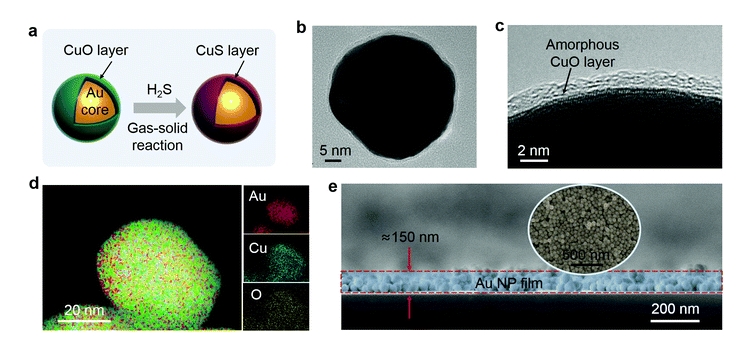Your current location:
- Home>
- Achievements>
- Research Papers
Rapid and ultrasensitive surface-enhanced Raman spectroscopy detection of mercury ions with gold film supported organometallic nanobelts
Author: Bao Haoming,Fu Hao,Zhou Le,Cai Weiping,Zhang Hongwen
Periodical: NANOTECHNOLOGY
Page: ¾í: 31 ÆÚ: 15
Full text link: https://iopscience.iop.org/article/10.1088/1361-6528/ab6630

Periodical: NANOTECHNOLOGY
Page: ¾í: 31 ÆÚ: 15
Full text link: https://iopscience.iop.org/article/10.1088/1361-6528/ab6630

Rapid, ultrasensitive and reliable detection of mercury ions (Hg2+) by surface enhanced Raman spectroscopy (SERS) is of importance, but is restricted by the extremely low Raman cross section of the Hg2+. Here, we report a facile methodology that can realize such detection based on the organometallic Cu(CH4N2S)Cl 0.5H(2)O nanobelts and SERS. In the assay, Hg2+ react with the nanobelts coated on a SERS active gold nanoparticle (NP) film to form ultrafine HgS NPs in situ. Subsequently, solid HgS is SERS determined to mirror the presence of Hg2+. Importantly, such detection is rapid and ultrasensitive. Within 10 min, limit of detection (LoD) of ppt level can be realized. The high detection efficiency is attributed to the superhydrophilicity, rich micropores and ultrathin nature of the organometallic nanobelts besides the strong SERS effect of Au NP film. In addition, this detection is highly resistant to various metal ions (Cu2+, Fe3+, Bi3+, Cr3+, Na+, Ni2+, Cd2+, etc) and is highly reliable in actual water (lake and tap water). Finally, influences of some substrate parameters and detection conditions on the test results are revealed. The optimal thickness of the gold NP film is about 80 nm, and the optimal wavelength of excitation light is about 633 nm. A small amount of Cu(CH4N2S)Cl 0.5H(2)O nanobelts or a large volume of Hg2+ contaminated solution contributes to low LoDs. We believe that this work provides a rapid and sensitive detection for Hg2+.
